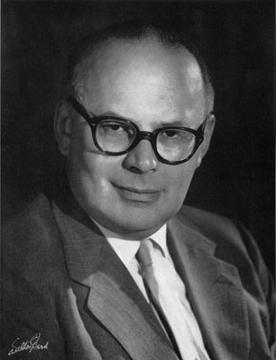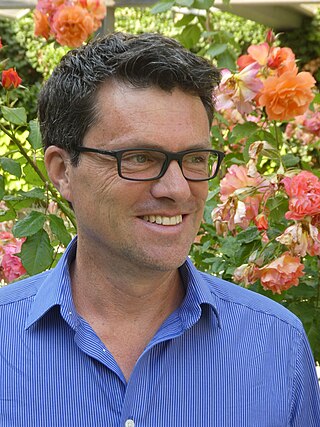Related Research Articles

The American Academy in Rome is a research and arts institution located on the Gianicolo in Rome,Italy. The academy is a member of the Council of American Overseas Research Centers.

Mary Ellen Miller is an American art historian and academician specializing in Mesoamerica and the Maya.

Rudolf Wittkower was a British art historian specializing in Italian Renaissance and Baroque art and architecture,who spent much of his career in London,but was educated in Germany,and later moved to the United States. Despite having a British father who stayed in Germany after his studies,he was born and raised in Berlin.
William Hood is an art historian and the Mildred C. Jay Professor of Art Emeritus at Oberlin College,where he taught from 1974 through 2007. Professor Hood taught the history of Italian Renaissance Art in Columbia University's Department of Art History and Archaeology from 2008 through 2010. He is currently teaching art history seminars at the New York University Institute of Fine Arts.
David Freedberg is Pierre Matisse Professor of the History of Art and Director of the Italian Academy for Advanced Studies in America at Columbia University. He was also Director of the Warburg Institute at the University of London from July 2015 to April 2017.
Charles Brian Rose is an American archaeologist,classical scholar,and author. He is the James B. Pritchard Professor of Archaeology at the University of Pennsylvania in the Classical Studies Department and the Graduate Group in the Art and Archaeology of the Mediterranean World. He is also Peter C. Ferry Curator-in-Charge of the Mediterranean Section of the Penn Museum,and was the museum's Deputy Director from 2008-2011. He has served as the President of the Archaeological Institute of America,and currently serves as director for the Gordion excavations and as Head of the Post-Bronze Age excavations at Troy. Between 2003 and 2007 he directed the Granicus River Valley Survey Project,which focused on recording and mapping the Graeco-Persian tombs that dominate northwestern Turkey.

Joseph James Connors is an American art historian and educator,who specializes in the Italian Renaissance and Baroque architecture.

Gauvin Alexander Bailey is an American-Canadian author and art historian. He is Professor and Alfred and Isabel Bader Chair in Southern Baroque Art at Queen's University.

Katherine Elizabeth Fleming is President and CEO of the J. Paul Getty Trust and the Alexander S. Onassis Professor of Hellenic Culture and Civilization in the Department of History at New York University (NYU) as well as Provost Emerita of the university. She was Provost of NYU from 2016 to 2022. She has been President and CEO of the J. Paul Getty Trust since August 1,2022,an appointment with which she became "effectively...the most powerful woman in the US museum world." A profile in the French newsweekly Le Point dubbed her "the most powerful woman in the world of art," while Émilie Lanez of the French newspaper L'Express has called her "the most powerful woman in American culture." She was included in the Observer's 2023 Business of Art Power List. Since arriving at the Getty,she has shown an interest in new models for the ownership of art,a theme on which she has spoken publicly,and has moved to further Getty's commitments to the Southern California art community. The Getty's innovative joint acquisition of "Portrait of Mai (Omai)" by Sir Joshua Reynolds,which took place in Fleming's first year at the helm of the Getty,was announced as "Acquisition of the Year" for 2023 by Apollo Magazine.

James Hankins is an American intellectual historian specializing in the Italian Renaissance. He is the General Editor of the I Tatti Renaissance Library and the Associate Editor of the Catalogus Translationum et Commentariorum. He is a professor in the History Department of Harvard University. In Spring 2018,he is a Visiting Research Fellow at the University of Notre Dame Center for Ethics and Culture.
Christia Mercer is an American philosopher and the Gustave M. Berne Professor in the Department of Philosophy at Columbia University. She is known for her work on the history of early modern philosophy,the history of Platonism,and the history of gender. She has received national attention for her work teaching in prisons and advocating for educational opportunities for incarcerated people. She is the Director and Founder of the Center for New Narratives in Philosophy at Columbia University,which "supports innovative research in the history of philosophy and promotes diversity in the teaching and practice of philosophy." She is the editor of Oxford Philosophical Concepts,co-editor of Oxford New Histories of Philosophy,and was elected to serve as president of the American Philosophical Association,Eastern Division,2019–20.
Craig Hugh Smyth (1915–2006) was an American art historian who studied Renaissance art,with a special emphasis on the artist Bronzino. During World War II,he established the Allied Munich Central Collecting Point for Nazi-looted art,as part of the Monuments,Fine Arts,and Archives program.

Caroline Jane Goodson is an archaeologist and historian at the University of Cambridge,previously at Birkbeck College,University of London. In 2003 she won the Rome Prize for medieval studies of the American Academy in Rome. In archaeological work,Goodson is most closely associated with the Villa Magna site in Italy where she has been field director since 2006.
Barbara Elisabeth Borg is Professor of Classical Archaeology at the Scuola Normale Superiore. She is known in particular for her work on Roman tombs,the language of classical art,and geoarchaeology.
Rubina Raja is a classical archaeologist educated at University of Copenhagen (Denmark),La Sapienza University (Rome) and University of Oxford (England). She is professor (chair) of classical archaeology at Aarhus University and centre director of the Danish National Research Foundation's Centre of Excellence for Urban Network Evolutions (UrbNet). She specialises in the cultural,social and religious archaeology and history of past societies. Research foci include urban development and network studies,architecture and urban planning,the materiality of religion as well as iconography from the Hellenistic to Early Medieval periods. Her publications include articles,edited volumes and monographs on historiography,ancient portraiture and urban archaeology as well as themes in the intersecting fields between humanities and natural sciences. Rubina Raja received her DPhil degree from the University of Oxford in 2005 with a thesis on urban development and regional identities in the eastern Roman provinces under the supervision of Professors R.R.R. Smith and Margareta Steinby. Thereafter,she held a post-doctoral position at Hamburg University,Germany,before she in 2007 moved to a second post-doctoral position at Aarhus University,Denmark. In 2011–2016,she was a member of the Young Academy of Denmark,where she was elected chairwoman in 2013.
David Edward Hemsoll FSA is a British art and architectural historian,specialising in Renaissance art and architecture,especially that of Rome,Florence,and Venice. He has published numerous catalogue essays and books that address architectural theory and the methodology of architectural design. He is currently (2020) Senior Lecturer in the Department of Art History,Curating and Visual Studies at the University of Birmingham.
Ann Marie Yasin is an Associate Professor of Art History and Classics at the University of Southern California specializing in the architecture and material culture of the Roman and late antique world. She studies materiality,built-environments,landscapes,and urbanism as they pertain to the ancient and late ancient religious worlds.

Dimitris Plantzos is a classical archaeologist and writer,Professor of Classical Archaeology at the National and Kapodistrian University of Athens. He specializes in Greek art and archaeology,archaeological theory,and contemporary and modern receptions of classical culture.
Tamar Herzig is an Israeli historian of Early Modern Europe who specializes in religious,social,minorities,and gender history,with a focus on Renaissance Italy. She is the Konrad Adenauer Professor of Comparative European History at Tel Aviv University and since 2021 also serves as the Vice Dean for Research of the Faculty of Humanities.
References
- ↑ Rome, American Academy in (4 June 2021). "Avinoam Shalem". American Academy in Rome. Retrieved 2022-05-11.
- ↑ Rome, American Academy in (13 February 2020). "Avinoam Shalem Appointed 24th Director of the American Academy in Rome". American Academy in Rome. Retrieved 2022-05-11.
- 1 2 3 "Avinoam Shalem". Columbia College Today. 2018-03-30. Retrieved 2022-05-11.
- ↑ Manzitti, Federica (2021-07-02). "Avinoam Shalem, neodirettore dell'American Academy: "Amo il disordine di Roma"". Corriere della Sera (in Italian). Retrieved 2022-05-11.
- ↑ "Avinoam Shalem | I Tatti | The Harvard University Center for Italian Renaissance Studies". itatti.harvard.edu. Retrieved 2022-05-11.
- ↑ "Scholar lecture: Avinoam Shalem, "When Nature Becomes Ideology" | Grad Art". gradart.williams.edu. Retrieved 2022-05-11.
- ↑ "The Invention of the Sacrosanct or 'Sacred Making' as an Aesthetic Praxis - WdW Review - Program - FKA Witte de With". www.fkawdw.nl. Retrieved 2022-05-11.
- ↑ "Avinoam Shalem | Department of Art History & Archaeology". arthistory.columbia.edu. Retrieved 2022-05-11.
- ↑ "New Director to give American Academy 'fresh perspective'". www.italianinsider.it. Retrieved 2022-05-11.
- ↑ "American Academy in Rome announces 2020-21 Rome Prize Fellowships". Archinect. Retrieved 2022-05-11.
- ↑ "The American Academy in Rome picks new director, the first woman of colour to lead the institution in its 128-year history". The Art Newspaper - International art news and events. 2022-04-01. Retrieved 2022-05-11.
- ↑ Rome, American Academy in (18 August 2021). "American Academy in Rome Leadership – Fall 2021". American Academy in Rome. Retrieved 2022-05-11.
- ↑ "The Department of Art History and Archaeology Receives A Major Grant from the Getty Foundation". Columbia News. Retrieved 2022-05-11.